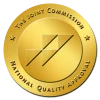After you’ve been through a traumatic experience, it’s normal to have trouble sleeping, experience bouts of anxiety, and feel like you’re not quite yourself. However, these symptoms generally become less intense as time passes. If you’re continuing to struggle and it’s interfering with your ability to work, spend time with loved ones, or enjoy your favorite hobbies, you could be suffering from post-traumatic stress disorder (PTSD).
Even though the general public tends to associate PTSD with military Veterans returning from combat, this condition is much more common than you’d expect. According to the National Institute of Mental Health, 6.8% of adults in the United States will struggle with PTSD at some point in their life. PTSD can develop after any type of trauma, but the good news is that it can be effectively managed when you have access to support from experienced mental health professionals.
Understanding the Different Types of Trauma
In the most general sense, the term trauma is used to refer to a distressing event outside a person’s normal lived experience. Traumatic events can be grouped into several different categories.
- Acute trauma. This type of trauma refers to a single traumatic event or a series of events that occur within a short time frame. Natural disasters, accidents, and physical assaults are some examples of the most common types of acute trauma.
- Chronic trauma. Chronic trauma refers to exposure to traumatic events over an extended period. This can include experiences such as being the victim of ongoing abuse, neglect, or domestic violence.
- Complex trauma. Complex trauma refers to ongoing trauma in situations where there is an expectation of trust, such as within a parent-child or teacher-student relationship.
- Secondary trauma. Also known as vicarious trauma, this type of trauma occurs when people are indirectly exposed to traumatic events through their relationships with others. For example, healthcare providers, first responders, and Veterans often experience secondary trauma due to the nature of their work.
- Generational trauma. Trauma can be passed from one generation to the next when it affects parenting styles, attachment, and communication patterns. The experiences associated with poverty, racism, and living in a war-torn region are just a few examples of situations that can lead to generational trauma.
In the mid-1990s, the Centers for Disease Control and Prevention (CDC) and Kaiser Permanente looked at data from more than 17,000 participants to see how exposure to traumatic events in childhood affected a person’s adult life. The study found a strong link between exposure to adverse childhood events (ACEs) and struggles with PTSD or other mental health conditions. This study played an important role in the development of trauma-informed care.
How Traumatic Experiences Can Lead to PTSD
An individual’s risk of developing PTSD depends on multiple factors. For example:
- Genetics. Some people may have genetic variations that make them more susceptible to heightened stress responses.
- Preexisting mental health disorders. People who have pre-existing mental health conditions, such as anxiety disorders or depression, are at increased risk for developing PTSD because these conditions make it more challenging to cope with the aftermath of a traumatic event.
- Nature of the trauma. Events that involve a direct threat to a person’s life or safety, such as combat exposure, assault, natural disasters, or serious accidents, are more likely to cause PTSD. Repeated or prolonged exposure to trauma also increases the risk of developing the condition.
- Social support. A lack of supportive social networks makes it difficult to get the care needed to process trauma in a healthy way.
- Post-trauma environment. When a person has another ongoing stressor, such as financial difficulties or problems at work, this increases their risk of developing PTSD.
Symptoms of PTSD
PTSD is diagnosed based on the criteria outlined in the Diagnostic and Statistical Manual of Mental Disorders (DSM-5). This includes a specific set of symptoms that fall into four main clusters:
- Intrusive symptoms. These include intrusive thoughts, memories, or nightmares related to the traumatic event. Flashbacks, where a person feels as though they are reliving the trauma, are also quite common.
- Avoidance. Individuals with PTSD may actively avoid people, places, activities, or conversations that trigger distressing memories or emotions related to the traumatic event.
- Negative changes in mood and cognition. People with PTSD may have persistent negative beliefs or expectations about themselves or the world, feelings of estrangement from others, and difficulty experiencing positive emotions.
- Arousal and reactivity. Irritability, outbursts of anger, hypervigilance, exaggerated startle response, difficulty concentrating, or trouble sleeping suggest that a person may be suffering from PTSD.
The DSM-5 criteria for PTSD specify that symptoms must persist for more than one month and in a way that negatively affects the person’s functioning and quality of life.
PTSD Treatment Options
At Eagle View Behavioral Health, we help men and women with PTSD learn how to manage their symptoms so they can lead fulfilling and meaningful lives. Our treatment programs in Bettendorf, Iowa, are personalized to fit individual needs but typically include a combination of therapy, medication, and supportive interventions.
Psychotherapy helps enhance coping skills and build resilience. Types of therapy used in PTSD treatment include:
- Cognitive behavioral therapy (CBT). CBT is a structured, evidence-based therapy that focuses on identifying and changing unhelpful thought patterns and behaviors.
- Eye movement desensitization and reprocessing (EMDR). EMDR uses bilateral stimulation, such as eye movements or tapping, to help process traumatic memories.
- Trauma-focused therapy. This approach addresses issues related to the traumatic event, including feelings of guilt, shame, and distorted beliefs about safety and trust.
- Group therapy. Group therapy provides an opportunity to connect with others who have experienced similar trauma, share experiences, and learn coping strategies.
Medications for PTSD help address specific symptoms and improve a person’s overall quality of life. Common medications used in PTSD treatment include:
- Antidepressants. SSRIs, such as sertraline (Zoloft) or paroxetine (Paxil), are commonly prescribed to help with depression, anxiety, and intrusive thoughts. In some cases, other classes of antidepressant medications, such as serotonin-norepinephrine reuptake inhibitors (SNRIs) or tricyclic antidepressants, may be prescribed.
- Prazosin. This medication may be used to reduce nightmares and improve sleep quality.
- Atypical antipsychotics. Atypical antipsychotics like quetiapine (Seroquel) or risperidone (Risperdal) are sometimes prescribed for severe anxiety, agitation, or dissociation.
- Benzodiazepines. Benzodiazepines, such as clonazepam (Klonopin) or lorazepam (Ativan), can be used on a short-term basis to help manage acute anxiety or panic symptoms.
Supportive interventions help people with PTSD better understand their condition and create a daily routine that supports their health.
- Self-care strategies. Exercise, meditation or other relaxation techniques, good sleep hygiene, and healthy lifestyle habits can reduce stress and improve overall well-being.
- Social support. Building and maintaining supportive relationships with friends, family members, or support groups can provide a sense of connection and validation.
Would you like to learn more about how we can help you move towards a healthier, happier future? Contact us today for a free, confidential evaluation.







